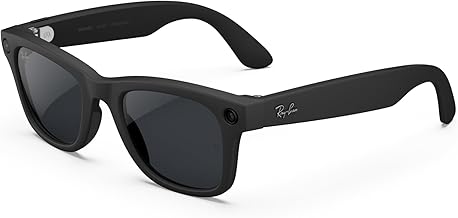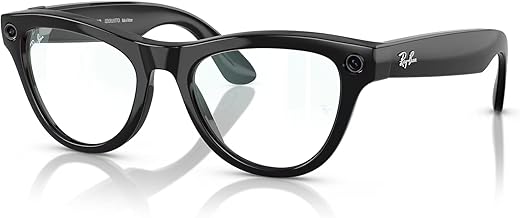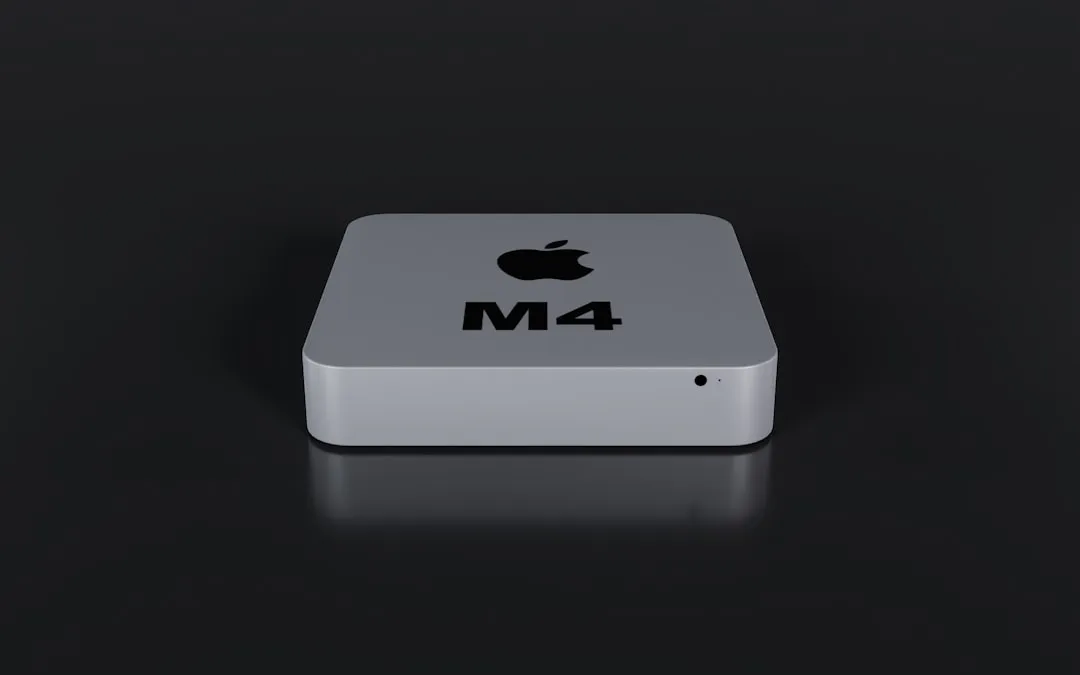Smart glasses are having their moment, and two standout contenders are reshaping how we think about wearable tech. The Ray-Ban Meta (Gen 2) brings everyday sophistication with enhanced camera capabilities and extended battery life, according to Meta's official specifications. Meanwhile, the Oakley Meta Vanguard takes a different approach, targeting athletes and outdoor enthusiasts with rugged design elements and specialized features. These aren't just incremental updates; they represent fundamentally different philosophies about where smart eyewear should go next. The Ray-Ban focuses on seamless daily integration, while the Vanguard offers superior durability ratings and sport-focused integrations that set it apart from traditional smart glasses. What do you want on your face, a stealthy assistant or a trail buddy?
Style meets substance: Design philosophy differences
The aesthetic divide between these models tells a compelling story about target audiences. Ray-Ban Meta (Gen 2) keeps the classic appeal that made the original a hit, offering three distinct frame styles, Wayfarer, Skyler, and Headliner, along with over 100 different style combinations to match personal preferences. The design philosophy prioritizes versatility and everyday wearability, so they are virtually indistinguishable from traditional eyewear. You get multiple color options and the option to go with tinted, transition and clear lenses, suitable for everything from professional meetings to casual outings.
The Oakley Meta Vanguard takes a dramatically different path, embracing what one reviewer described as the signature Oakley Sphaera look with its wraparound visor design. This isn't about blending in. It is about making a statement. The large, reflective lens wraps around the whole front frame, even covering the front half of the temples, creating an unmistakably athletic aesthetic that serves a practical purpose.
This larger form factor tackles the weight challenge that comes with packing advanced technology into eyewear. The Vanguard weighs 66 grams compared to the Ray-Ban's lighter build, and this extra weight translates to enhanced durability and sports-oriented features. More importantly, the size enables superior weight distribution that improves comfort during extended activities. The Vanguard's built-in nose pads prevent sliding, even with sweat and the up-down motion of running, a fix for the slipping that plagues lighter smart glasses during athletic activities.
PRO TIP: If you are planning to wear smart glasses during workouts, the weight distribution matters more than total weight. The Vanguard's strategic mass placement keeps them secure when lighter alternatives would slip and slide.
Camera capabilities: Where field of view makes all the difference
Both models feature impressive 12MP ultra-wide cameras, yet their implementation reflects the distinct design philosophies established by their form factors. The Ray-Ban Meta (Gen 2) delivers solid performance with a 100-degree field of view that captures natural-looking footage for everyday scenarios. The camera sits at the corner of the frame for discrete recording, a familiar setup.
The Oakley Meta Vanguard's wraparound design enables its breakthrough camera innovation, a significantly wider 122-degree field of view combined with centered lens positioning. This is not just about capturing more environment. The camera sits at the center of the lenses rather than the corner, resulting in more natural point-of-view footage that better represents what the wearer actually sees. For action sports where every angle matters, this centered positioning avoids the awkward off-axis shots that corner-mounted cameras produce.
Both models support 3K video recording at 30fps and 1080p at 60fps, but the Vanguard's athletic focus shows in its specialized modes. Slow-motion capture at 720p/120fps and hyperlapse functionality for extended recording sessions turn routine workouts into compelling content. The new hyperlapse and slow-motion modes improve action capture, with footage coming out smooth and stabilization working well, proof that specialized features can enhance rather than complicate the user experience.
Performance where it counts: Battery life meets environmental demands
Battery specifications tell only part of the performance story. Real-world durability under stress reveals the true differences. The Ray-Ban Meta (Gen 2) delivers up to 8 hours of use with an additional 48 hours from the charging case, a significant improvement over the original Ray-Ban Meta glasses. This extended battery life makes them practical for all-day wear in typical usage scenarios.
The Oakley Meta Vanguard edges ahead with up to 9 hours of active use and 36 hours from the case, but intensive testing reveals more nuanced performance patterns. During heavy usage including music streaming, video recording, and fitness tracking, one tester found the Vanguard maintained 49% battery after a 2-hour run, roughly 4 hours of demanding athletic use. For more moderate activities, Oakley Meta Vanguard lasts about six hours with music streaming, slightly better than Ray-Ban Gen 2s with five hours.
Environmental protection turns battery life from a spec sheet into a competitive advantage. The Vanguard features IP67 water and dust resistance, making it suitable for sweaty workouts, dusty trails, and even shallow water exposure for up to 30 minutes. Ray-Ban Meta (Gen 2) has IPX4 splash resistance (not full dust/water immersion protection), which means environmental stress can compromise both performance and longevity. Meta and reviewers report the Vanguard is designed with performance-oriented tolerances (IP67 + larger battery), but battery performance in cold conditions varies by usage — cite a hands-on battery test before asserting a consistent cold-weather advantage.
Smart features: Fitness integration vs. everyday AI
Both glasses leverage Meta AI for voice commands, live translation, and general assistance, but their smart ecosystems serve distinct interaction patterns. The Ray-Ban Meta (Gen 2) focuses on seamless daily integration, offering adaptive volume speakers that adjust to environmental noise and broad compatibility with music streaming services like Spotify and Apple Music, perfect for transitioning between quiet offices and busy streets.
The Oakley Meta Vanguard's smart features build around fitness workflows, starting with dedicated integrations for Garmin devices and Strava. This is not just app compatibility. The integrated Garmin system provides real-time stats, overlay data on videos, and video access from Garmin devices, creating a unified ecosystem where workout data flows seamlessly into content creation. The system works by linking the Meta AI app with Garmin Connect IQ, enabling automatic content capture based on performance milestones.
Audio performance complements these different smart ecosystems. While both feature open-ear speakers, the Vanguard's speakers produce 6 decibels more output and include wind-optimized microphones for clearer audio capture during outdoor activities. This louder, wind-resistant audio suits the Vanguard's outdoor focus, while the Ray-Ban's adaptive volume system excels in varied daily environments where subtlety matters more than raw power.
The verdict: Choose your adventure
These are not competing products; they are complementary solutions for different lifestyles. The Ray-Ban Meta (Gen 2) starting at $379 delivers refined everyday smart glasses with prescription lens compatibility from -6.00 to +4.00 and style versatility that works in professional and casual settings. They represent smart eyewear's mainstream evolution, proving that advanced technology can integrate seamlessly into daily life without compromising on aesthetics or comfort.
The Oakley Meta Vanguard at $499 targets a specific but underserved market, athletes and outdoor enthusiasts who want their smart glasses to keep pace with active lifestyles. The rugged design, enhanced durability, and fitness-specific integrations justify the premium pricing for users who need technology that will not quit when the going gets tough. The trade-off comes in everyday versatility. The glasses do not support prescription lenses and feature a distinctly sporty aesthetic that will not suit every situation.
For most users seeking their first smart glasses experience, the Ray-Ban Meta (Gen 2) offers broader appeal and practical daily utility. But for athletes, content creators focused on action sports, or anyone whose lifestyle demands serious durability, the Vanguard's specialized features and rugged construction make it a compelling choice that finally delivers smart glasses built for adventure. Think of it as choosing between a versatile daily driver and a specialized sports car; both excel in their intended environments, but one clearly wins when the pavement ends and the trail begins.



























Comments
Be the first, drop a comment!